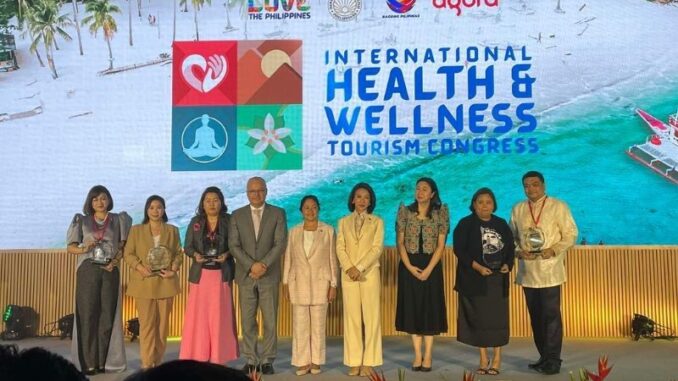
MANILA, Philippines — The Department of Tourism (DOT) seeks to position the Philippines as a hub for affordable healthcare and wellness services, expanding beyond its renowned beaches, islands and mountains to attract a wider range of tourists.
On Monday, October 14, the Philippines hosted the second International Health and Wellness Tourism Congress, featuring an exhibit of local businesses offering products and services designed to promote relaxation through taste, scent and touch.
Philstar.com / Dominique Nicole Flores
Why health and wellness? Tourism Secretary Christina Frasco, in her keynote address, said that travelers today seek more than just fun and adventure. Tourists are increasingly looking for meaningful experiences that enhance well-being and improve quality of life, she added.
In response, the DOT is enhancing health and wellness tourism by integrating the country’s medical services with traditional Filipino healing practices, such as the Hilot massage technique, while also incorporating organic products into its offerings.
“This combination of modern healthcare and time-honored traditions makes the Philippines a unique and appealing destination for those seeking a complete wellness experience,” Frasco said.
What kind of services? Asked about the specific medical treatments and wellness services available in the Philippines, Frasco said the primary offerings include preventive care, cosmetic procedures, dental services, ophthalmology, orthopedics, spas and nature retreats.
According to Frasco, the country also attracts tourists with its affordable yet high-quality services. The Medical Tourism Index reported that medical procedures in the country are 40-80% cheaper compared to Western countries.
“The pricing of the Philippines is very competitive in terms of its ability to offer health and wellness tourism packages. And most importantly, the Filipinos’ hospitality is really second to none,” she said in a mix of English and Filipino.
The tourism department is also working to establish Tourist First Aid Facilities in Boracay, Panglao, Siargao, and El Nido, along with a Medical Tourism Concierge at Manila’s international airports.
Economic benefits. Frasco added that this initiative benefits the economy by creating additional tourism jobs for Filipinos, in addition to generating revenue from the country’s status as a tourism hotspot.
In his opening speech, Agora Group CEO Hadi Malaeb emphasized five pillars that the Philippines must strengthen to become a key player in the health and wellness tourism sector: world-class infrastructure, accreditation, talent development, holistic wellness experiences, and public-private partnerships.
This is why the DOT is concentrating its efforts on ensuring that local hospitals, wellness centers, dental clinics and other medical facilities meet international quality standards.
A global tourism hub. According to Paulo Tugbang, DOT director for product development, the Philippines ranked 24th out of 46 countries in the 2020-2021 Medical Tourism Index, placing third in Southeast Asia.
The Medical Tourism Index is published by the Medical Tourism Association and ranks countries based on the quality of care they provide and the attractiveness of their destinations for medical tourism.
Malaeb also said that the Philippines could position itself as a “leading destination” in the health and wellness global market, catering to an average of 80,000 tourists annually.
“So right now, the figure is around 80,000 arrivals per year, and are mainly from the surrounding areas here in the neighboring counties. … In the future, some experts predict that within the next five or ten years, this number can jump to around half a million,” Malaeb told reporters in an interview.
While Agora Group reported 80,000 annual arrivals, the Department of Tourism clarified that their data shows over 250,000 tourists visiting the Philippines yearly.
Frasco said that the Philippines has attracted buyers from 38 countries who are considering investing in the country’s health and wellness tourism sector.
The 2nd Health and Wellness Tourism Congress is a two-day event themed “Aruga,” highlighting the Philippines’ commitment to care and nurturing.


Be the first to comment